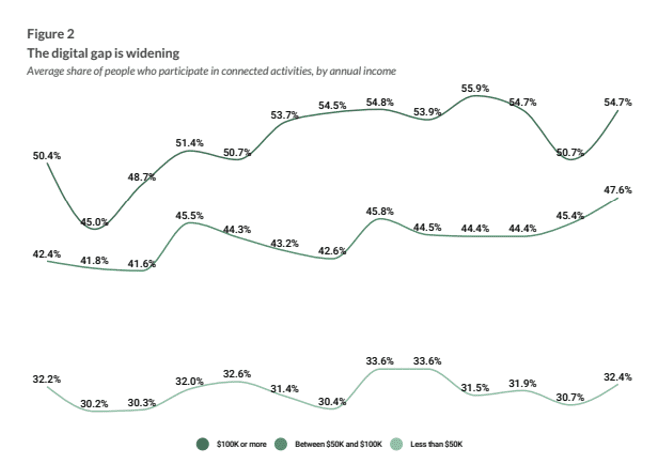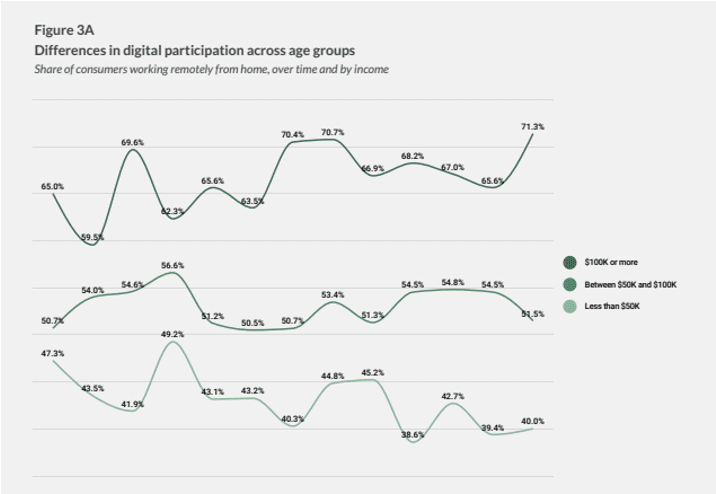
How we work is one of several key factors impacting consumers’ access to healthcare, travel tools, and other services via digital channels, with an income gap playing into this dynamic.
As shown in the new PYMNTS study “The ConnectedEconomy™ Monthly Report: Digitally Divided — Work, Health and the Income Gap,” based on surveys of over 2,700 consumers, we found that a widening income gap is reshaping the use of the internet, in this case, use of digital tools covering everything from travel to healthcare to payments being affected.

Looking first at the overall economic picture, the study notes that high-income consumers’ participation in the ConnectedEconomy™ is up 9% year over year, but low-income consumers’ participation has remained virtually unchanged.
“High-income consumers are using digital more, partly because they are still working from home,” the study states, “while low-income consumers are increasingly returning to jobs requiring them to work onsite.”
We found that high-income consumers are now 78% likelier than their low-income counterparts to have jobs they can perform from home: 71% of high-income consumers — a projected 45 million individuals — now work remotely from home at least sometimes, up 10% year over year.
Only 40% of low-income consumers worked remotely in January, down 15% year over year.

Moving to the consumption of different services as it relates to the low-income/high-income divide, the latest ConnectedEconomy™ study shows, for example, that high-income and mid-income consumers are 1.5 times more likely than low-income consumers to go online to book vacations and generally spend on travel and accommodations, and that gap is increasing.
Healthcare is another area where we see this effect. The study notes “a sharp increase in the gap separating high-income and low-income consumers with digital healthcare activity. High-income consumers are now twice as likely as low-income consumers to use digital to access healthcare services.”
It continues that “an average of 59% of high-income consumers used digital to access healthcare services or communicate with their providers in January 2023 — up from 50% in January 2022. Just 35% of low-income consumers used digital to access healthcare services or communicate with their providers in January 2023 — up from 32% in January 2022.”
High-income consumers are more engaged in the ConnectedEconomy™ than any income bracket. Per the study, high earners are “twice as likely to have paid for their most recent purchase via a digital wallet as they were in January 2022 — and their increased digital participation is why. Twenty-one percent of high-income consumers paid for their most recent purchase via a digital wallet, while just 12% of low-income consumers did the same.”
Get the study: The ConnectedEconomy™ Monthly Report: Digitally Divided — Work, Health and the Income Gap